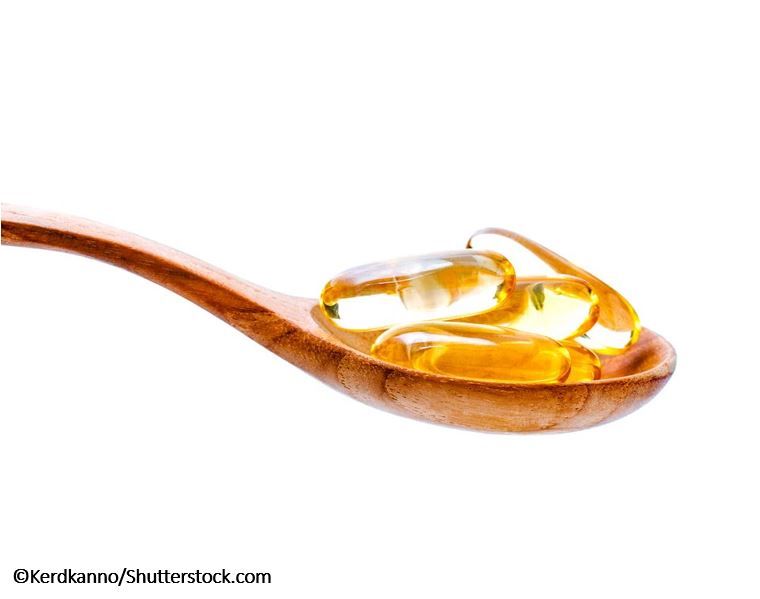How Long-Chain Omega-3 Fatty Acids Improve Longevity
Cardioprotective effects of omega-3 fatty acids accrue over multiple risk factors; the higher the Omega-3 Index, the lower the risk of mortality.

Higher circulating levels of omega-3 fatty acids can help people live longer, according to recent studies.1-3 The cardioprotective benefits are accrued across multiple risk factors, resulting in lower mortality for people with higher omega-3 levels, as measured by the Omega-3 Index.
The Cardiovascular Health Study1, for instance, found that levels of long-chain n-3 polyunsaturated fatty acids (PUFAs) corresponded inversely to total mortality. Pottala et al2 reported the same association to all-cause mortality in participants from the Heart and Soul cohort with existing heart disease, independent of commonly-accepted risk factors and markers of cardiovascular disease (CVD), such as lipid values and inflammation.
Recent research by Harris et al3 found a direct inverse relationship between omega-3 levels and markers of CVD mortality. Using a study population of 2500 participants from the Framingham Study Offspring cohort, the investigators compared 3 categories of PUFAs, including eicosapentaenoic acid (EPA), docosahexaenoic acid (DHA), and docosapentaenoic acid (DPA). Individuals in the highest Omega-3 Index quintiles of all 3 categories had significantly reduced risks of both cardiovascular events and death from any cause; however, only EPA and DHA levels at baseline were predictive of mortality at the end of 7 years; DPA levels did not show any corresponding trends.
Impact of PUFAs on Mortality
Outcomes data from participants included in the cohort (mean age 66 years, no CVD, male-female ratio of 46-54%) was already available. Death from any cause was reduced by 34% in the highest quintile of the Omega-3 Index compared to the lowest (>6.8% vs <4.2%). The most prominent associations were non-CVD, non-cancer deaths from “other” causes not specified, making it difficult to evaluate mechanisms. Changes in omega-6 levels did not alter mortality outcomes.
Impact of PUFAs on Cardiovascular Outcomes
Additionally, the Omega-3 Index showed significant inverse relationships between the highest quintile compared to the lowest quintile and total values for CVD. A 50% reduction in CVD was not statistically significant (due to low event rates), however, and did not continue across the other quintiles. Values for coronary heart disease (CHD) and stroke were significantly reduced across the total cohort.
Specific Trends Associated with PUFA Components
A total risk reduction for stroke of 59% was observed in the Framingham cohort, in a specific pattern only across the top 2 quintiles, although the benefits persisted across all 5 quintiles, and were attributable primarily to DHA levels alone. This seemed consistent with other studies showing a correspondence between lower DHA levels and poor functional outcomes at 90 days, and an effect on stroke severity that was independent of a similar trend with EPA.4
Likewise, Pottala and colleagues3 found compelling evidence that CHD events such as primary cardiac arrest5 and sudden cardiac death6 could be predicted by metrics that measured EPA+DHA components in red blood cells and whole blood. As previous observations had already indicated that teleomeric measures used as surrogates for cellular aging also correlated inversely to EPA+DHA components of omega-3 levels in the circulating bloodstream, they suggested that low omega-3 levels may have directly adverse effects on metabolic processes.3,7
References:
1. Mozaffarian D, Lemaitre RN, King IB, et al. Plasma phospholipid long-chain omega-3 fatty acids and total and cause-specific mortality in older adults: a cohort study. Ann Intern Med. 2013;158:515–525.
2. Harris WS, Tintle N, Etherton MR, Vasan RS. Erythrocyte long-chain omega-3 fatty acid levels are inversely associated with mortality and with incident cardiovascular disease: The Framingham Heart Study. J Clin Lipidol 2018 In Press.
3. Pottala JV, Garg S, Cohen BE, Whooley MA, Harris WS. Blood eicosapentaenoic and docosahexaenoic acids predict all-cause mortality in patients with stable coronary heart disease: the Heart and Soul study. Circ Cardiovasc Qual Outcomes 2010;3:406-412.
4. Bosch J, Gerstein HC, Dagenais GR, et al. n-3 fatty acids and cardiovascular outcomes in patients with dysglycemia. N Engl J Med 2012;367:309–318.
5. Siscovick DS, Raghunathan TE, King I, et al. Dietary intake and cell membrane levels of long-chain n-3 polyunsaturated fatty acids and the risk of primary cardiac arrest. J Am Med Assoc 1995;274:1363–1367.
6. Albert CM, Campos H, Stampfer MJ, Ridker PM, Manson JE, Willett WC, Ma J. Blood levels of long-chain n-3 fatty acids and the risk of sudden death. N Engl J Med 2002;346:1113–1118.
7. Farzaneh-Far R, Lin J, Epel ES, Harris WS, Blackburn EH, Whooley MA. Association of marine omega-3 fatty acid levels with telomeric aging in patients with coronary heart disease. JAMA 2010;303:250–257.